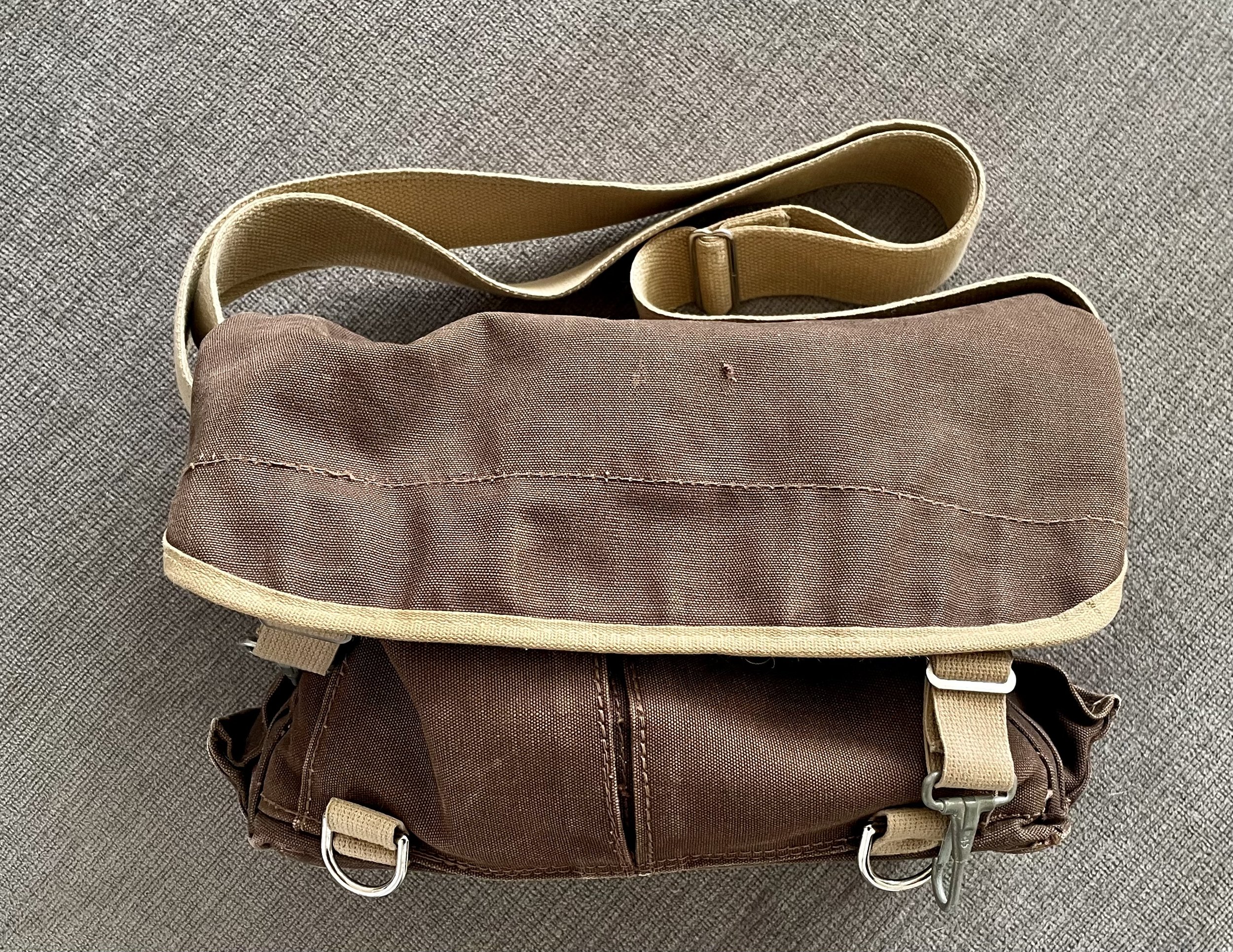When I arrived at the dog training center, I grabbed the camera bag from the car and slung it over my right shoulder. The strap was adjusted so the bag sat right at my hip. The first thing I noticed was how very comfortable the bag was to wear, even with the big and heavy F5 inside. While walking across the parking lot, I saw an interesting shot of a water tower. The Domke bag was sitting at just the right position for me to lift the flap, grab the F5, get the shot and put it back into the bag quickly and easily. Hmmm.
I spent the next hour putting the F5 through its paces with a roll of Kodak Portra 400. I never took the camera bag off of my shoulder the entire time, it’s that comfortable to wear! When there was a lull in the action, I slipped the camera back into the bag easily while it was still on my hip. I have never left a camera bag on my shoulder for this long. Ever. The soft canvas sides of the Domke just meld with the contour of your body making it seem like a part of you. Hmmm.
Jim Domke was a staff photographer at the Philadelphia Inquirer back in the mid 1970s. In those days, most of the camera cases were big, heavy and made of metal. The cases had foam inside that you cut to fit the shape of a camera, lenses, etc. To shoot, you had to set it down, open it up and pull out your camera. Not very efficient for a fast-moving press photographer. Jim felt he could come up with a better bag for the Inquirer staff photogs and convinced the paper to pay for 20 if he designed them himself and could deliver them at a reasonable cost. He took his inspiration from heavy canvas tackle bags for fishing. Above all, he wanted a bag that would be comfortable for the photographer and give quick access to gear. Jim designed his bag and had prototypes made which he had tested by photographers in the press pool of the 1976 Republican National Convention. With their feedback, the original Domke F2 shooter’s bag was born. Within months, Jim had sold 800 bags. He expanded the line with different size bags and his company grew and grew. He sold the company to Saunders in 1990. Saunders was acquired by Tiffen (the lens filter people) in 1999.
I’ve known about Domke bags for years but have always opted for something newer, sleeker, sexier. I have a Domke Gripper camera strap that I love, especially on heavier cameras like the Nikon F4 or F5. For the life of me, I have no idea why I let my Domke bag sit in the corner of my closet for so many years. This is the best camera bag I have ever used!
I know my bag was one of the early ones because it had canvas insert dividers. I removed those long ago. On my shoot, I stuffed a hand towel in the bag for extra protection for the camera. When I got home, I noticed that Domke sells padded inserts with velcro dividers that fit the F2 for $40. Amazon delivered them the next day. The insert will provide the protection I need for whatever camera I am carrying and the dividers allow customization. The bag also features side pockets for film, light meters, etc. There are also two additional pockets on the front as well as safety straps with clips to secure the flap if necessary. The adjustable strap, which is very wide, is one reason I think this bag sits so comfortable on my shoulder.














































































































